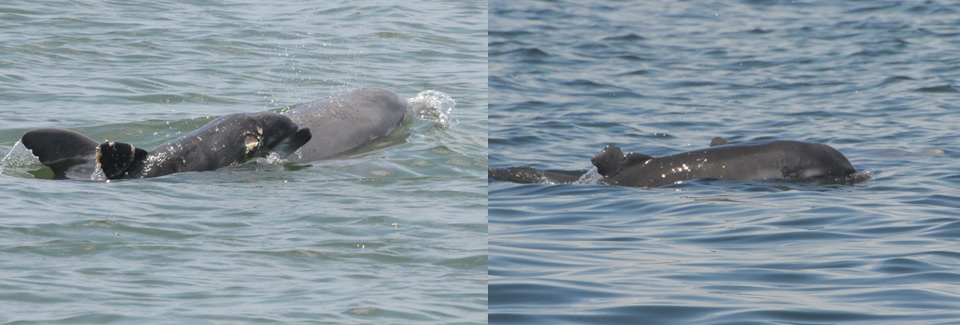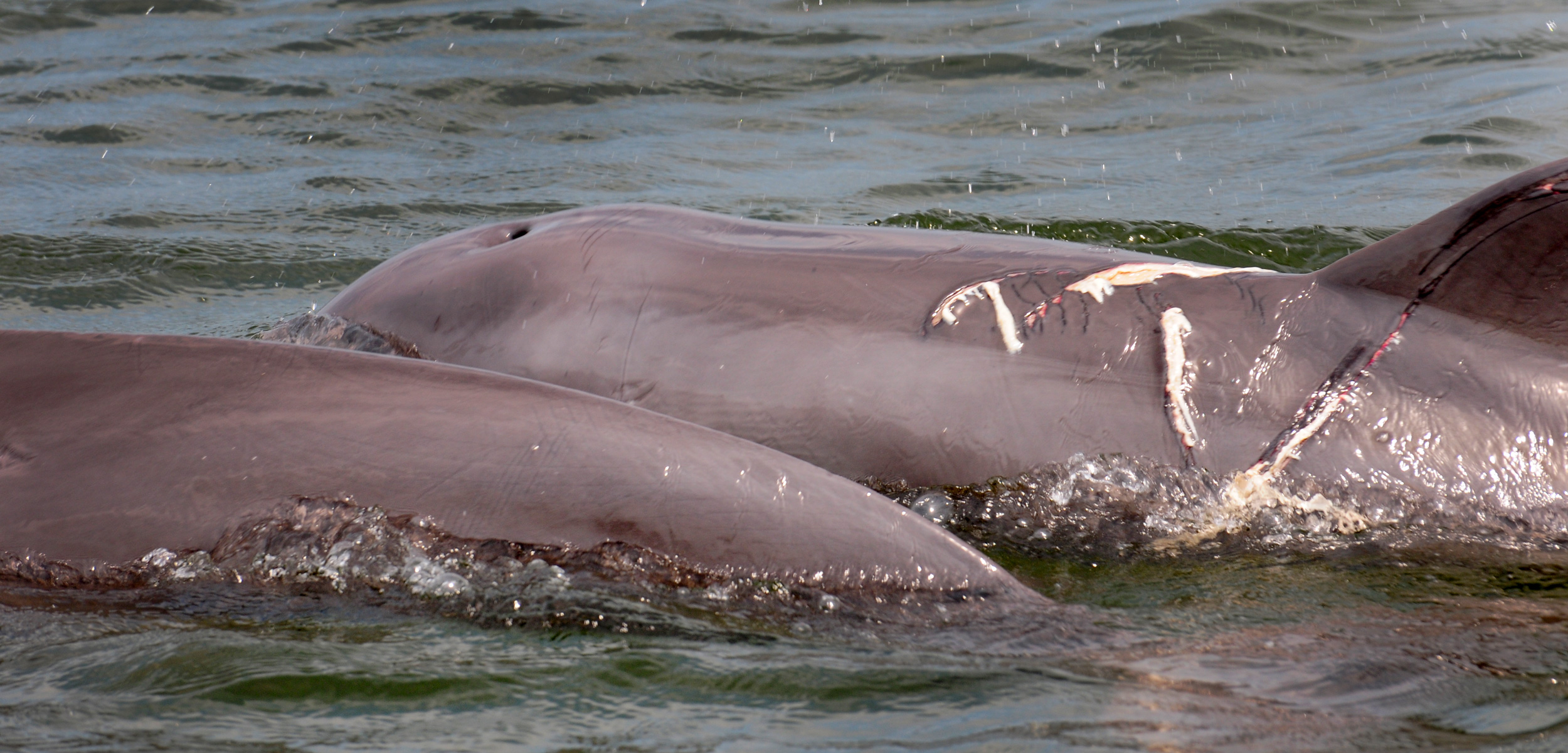Tracking the Scars of Dolphin-Shark Battles
It’s almost impossible to witness skirmishes between dolphins and sharks, so researchers look to their battle scars for clues.
Article body copy
Shark versus dolphin is an epic oceanic battle—pitting brain against brawn, social cooperation against rugged individualism. But while the war has likely run for millions of years, the skirmishes are fleeting, brief, and rarely witnessed.
“They happen so quickly that our chances of seeing them are low,” says Michael Heithaus, a marine ecologist at Florida International University who’s spent years in the water among dolphins and sharks. “I’ve seen one direct interaction in my life,” he says, describing a scene in Western Australia’s Shark Bay when a great white swam toward a pod of dolphins that scattered when they sensed the impending threat.
Since it’s almost impossible to witness the altercations in real time, biologists track the aftermath instead. Krystan Wilkinson, a research assistant with the Sarasota Dolphin Research Program, recently published her analysis of recorded shark attack scars on bottlenose dolphins in the Sarasota Bay area just south of Tampa Bay, Florida. She says about 35.5 percent of the dolphins captured and released through a monitoring program that’s been running since the mid-1970s had at least one scar from a shark attack, identified by jagged tooth lines. But this percentage likely only represents a minimum, since many more dolphins likely died as a result of the attacks.
Wilkinson says bull sharks are the likely culprits, but it’s hard to know the circumstances—were the sharks trying to eat the dolphins, or were the bites defensive?
Contrary to Flipper stereotypes, dolphins are far from innocent. But Heithaus says they pick their battles with care. “We do know that dolphins will attack and kill small sharks,” he says, adding that they will also kill other large fish and small porpoises that pose no immediate threat. They don’t usually eat these victims though, and the altercations often happen when the dolphins appear to be socializing. “You can’t read intent, but my guess is in a lot of cases it isn’t just, ‘Whoops: did that happen?’” Heithaus says.

Before and after photos show how one dolphin has recovered from its encounter with a shark. Photos by the Chicago Zoological Society’s Sarasota Dolphin Research Program. Photos collected under National Marine Fisheries Service Scientific Research Permit No. 15543.
The threat of hungry sharks may affect dolphin behavior. Heithaus says the marine mammals around Australia’s Shark Bay, for instance, will often opt for less optimal feeding grounds that have fewer sharks. He thinks that while the dolphins will change their behavior to avoid sharks, the sharks likely don’t change their behavior to seek out dolphins—most of their bites seem to be opportunistic.
While it may seem gruesome, frequent war wounds may actually point to a healthy marine ecosystem, one with ample populations of two large predators, Heithaus says. But sharks are targeted much more often than dolphins by global fisheries, he says, so population ratios in many parts of the world are likely skewed in favor of the mammals. The number of dolphins with shark bites in Sarasota Bay is low compared to some other locations. Based on research conducted in Shark Bay, for example, where the shark population is much more robust, Heithaus estimates that more than 70 percent of the dolphins have scars from shark bites, and that around 10 percent of the resident dolphin population gets attacked every year.
The scale of the war being waged between sharks and dolphins is just now coming to light. But from the dolphins’ perspective, says Wilkinson: “It’s been going on for millions of years, so it’s nothing new to them.”

